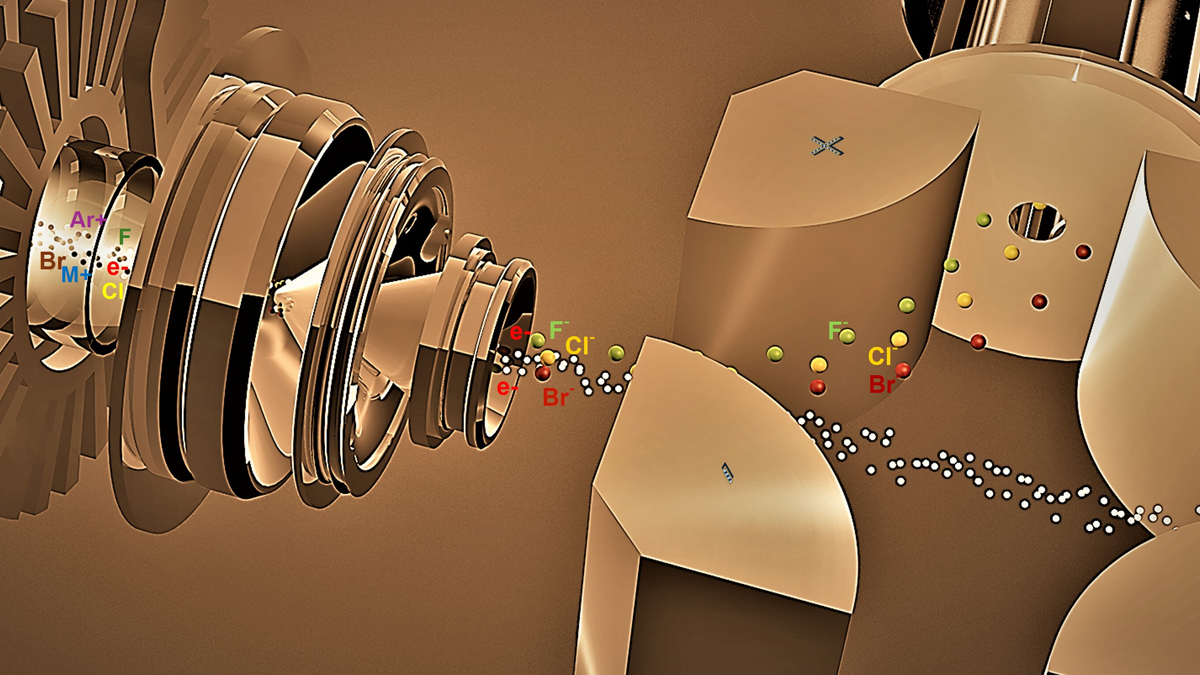Advancing Environmental and Pharmaceutical Analysis Through Improved Fluorine Detection
Organo-fluorine compounds have been widely used for decades, and they are now prevalent in our environment and food as contaminants and in pharmaceuticals as fluorinated drugs compounds. Development of robust analytical techniques based on elemental fluorine detection is key to quantifying unidentified fluorinated compounds when standards are not readily avaiable. On the other hand, in pharmaceuticals, the development of fluorinated drugs has been growing fast, and to-date, an estimate of four in ten new small-molecule drugs submitted for approval annually are fluorinated. A compound-independent detection of elemental fluorine at high sensitivity during drug discovery would greatly improve metabolite mass balance studies as part of method development and validation.
A new study published in the Journal of Analytical Atomic Spectrometry has revealed crucial insights into how Inductively Coupled Plasma Mass Spectrometry (ICP-MS) operating to detect negative ions, potentially revolutionizing the detection of fluorine-containing compounds that are critical for environmental monitoring and drug development.
The Challenge: Detecting the Undetectable
Fluorine detection has long been one of analytical chemistry’s most persistent challenges. Unlike other elements routinely analyzed by ICP mass spectrometry, fluorine’s unique properties make it notoriously difficult to detect using conventional positive-ion ICP-MS methods. This limitation has significant real-world implications, particularly in environmental monitoring of per- and polyfluoroalkyl substances (PFAS)—the “forever chemicals” that persist in our environment and pose serious health risks.
A research collaboration between PerkinElmer and University of Graz, led by Andrea Raab, Hamid Badiei, and Jörg Feldmann, tackled this fundamental problem by investigating negative ion formation in ICP-MS using modern commercial instrumentation with minimal modifications.
The Discovery: Location Matters
The study’s most significant finding challenges conventional understanding of where and how negative ions form in mass spectrometry. Using all halogens (fluorine, chlorine, bromine, and iodine) as diagnostic tools, the researchers confirmed suggestions by early literature reports that negatively charged halogen ions are generated in the instrument’s interface region—not in the plasma itself. They also went further to characterize and optimize the system for best performance and halogen detection limits and demonstrated its performance using real samples for the first time.
This revelation has profound implications for instrument design and analytical methodology. The team found that the sensitivity of negative ion detection depends primarily on atomic radius (which affects collision cross-section) rather than electron affinity, contradicting earlier theoretical predictions.
Practical Applications: From PFAS to Pharmaceuticals
The implications of this research extend far beyond academic interest. Improved fluorine detection capabilities could transform several critical areas:
Environmental Monitoring: With over 15,000 known PFAS compounds contaminating water supplies worldwide, better fluorine detection methods are essential for comprehensive environmental assessment. Current analytical techniques can only detect approximately 40 PFAS compounds out of thousands in existence.
Pharmaceutical Analysis: The pharmaceutical industry increasingly relies on fluorinated compounds, with halogen atoms considered beneficial for drug absorption, distribution, metabolism, elimination, and toxicity (ADMET) properties. Enhanced detection capabilities could improve quality control and drug development processes.
Industrial Applications: From lithium-ion battery manufacturing to renewable fuel production, halogen analysis plays a crucial role in modern industrial processes.
Technical Innovation: Bridging Theory and Practice
The research employed systematic parameter optimization, studying factors including water content, forward power, gas flows, and ion optics parameters. This comprehensive approach provides a roadmap for developing commercial instruments capable of routine fluorine analysis—something that has remained elusive despite significant demand from analytical laboratories.
The study’s use of modern commercial ICPMS equipment with minimal modifications is particularly significant, as it demonstrates the feasibility of implementing these findings in existing laboratory infrastructure rather than requiring entirely new instrumentation.
Future Implications: Toward Routine Fluorine Analysis
This fundamental understanding of negative ion formation processes opens new possibilities for instrument manufacturers and analytical chemists. The research provides crucial knowledge for “potentially building an instrument capable, among other elements, of determining fluorine with the capability to address the needs in environmental and medical science”.
As regulatory pressure increases around PFAS monitoring and environmental protection, the demand for reliable, routine fluorine detection methods will only intensify. This research represents a critical step toward meeting that need, potentially enabling more comprehensive environmental monitoring and better protection of public health.
The work by Raab, Badiei, and Feldmann demonstrates how fundamental research into analytical mechanisms can have far-reaching practical applications, bridging the gap between theoretical understanding and real-world analytical needs in our increasingly complex chemical environment.
REFERENCES:
Raab, A., Badiei, H. & Feldmann, J. How are negative ions in an ICPMS formed? J. Anal. At. Spectrom. 40 (2025). https://doi.org/10.1039/d4ja00433g
The paper was published in 2025 in volume 40 of the Journal of Analytical Atomic Spectrometry (JAAS), which is published by the Royal Society of Chemistry
